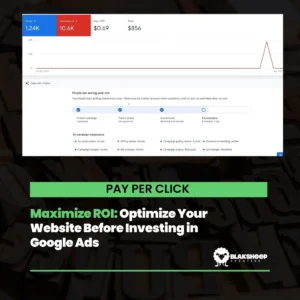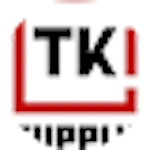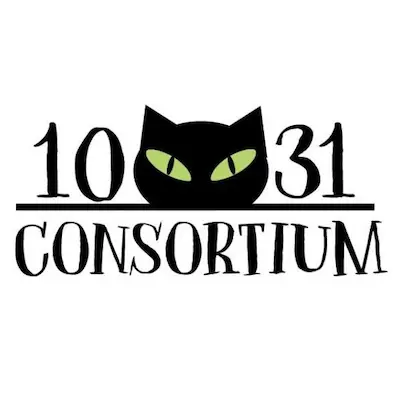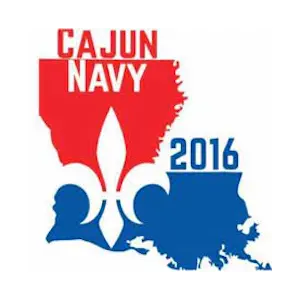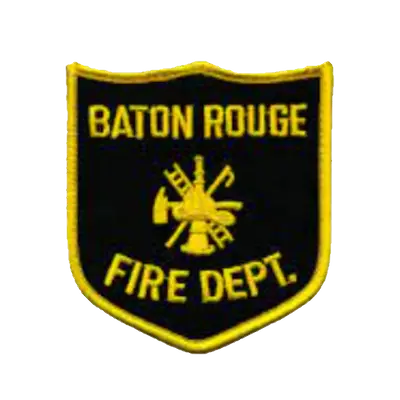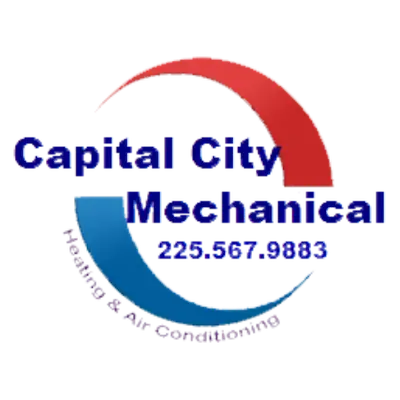SEO is an ever-evolving industry with new acronyms popping up all the time. It can be tough to keep up, especially if you’re not in the industry yourself.
We catch it all of the time. We’ll be talking to a client about something we’re working on and drop an acronym only to get a quizzical look in return. It’s not that our clients are uninformed; it’s that SEO has a language all of its own.
So, in an effort to help you understand some of the jargon we use day-to-day, here are definitions for some of the most common SEO acronyms and words you’ll hear us say:
SEO Acronyms
SEO, SERP, PPC, what does it all mean? If you’re not in the industry, it can be challenging to keep up with all of the acronyms. Here are some of the most common ones you’ll hear us use and what they stand for:
2FA – Two-Factor Authentication. This is a security measure that requires users to provide two forms of identification in order to access an account.
A/B – Test. This is a test that compares two versions of something to see which performs better.
ADA – Americans with Disabilities Act. This is a law that protects the rights of disabled people.
AI – Artificial Intelligence. This is the process of using computers to simulate human intelligence.
Learn more about how Artificial Intelligence is reshaping the SEO landscape in our comprehensive guide: SEO in the AI Era.
AIDA – Attention, Interest, Desire, Action. This is a model that is used to describe the steps of a sale.
AJAX – Asynchronous Javascript and XML. This is a type of code that allows web pages to load faster by sending and receiving data asynchronously.
AM – Amazon. This is an online retailer.
AMP – Accelerated Mobile Pages. This is a type of HTML code that makes your web pages load faster on mobile devices.
AOV – Average Order Value. This is the average amount of money that is spent per order on a website.
API – Application Program Interface – This is a set of rules that allows two pieces of software to communicate with each other.
AVI – Audio Video Interleave. This is a type of video file that is often used on the web.
B2B – Business to Business. This refers to businesses that sell products or services to other businesses.
B2C – Business-to-consumer. This refers to businesses that sell products or services to consumers.
BH- Blackhat. This is a term used to describe unethical or illegal practices in SEO. Using blackhat techniques can result in a website being penalized by search engines.
BHW – Blackhat World. This is a forum where people can discuss blackhat SEO techniques.
BL – Backlink. This is a link from one website to another.
BL – BrightLocal. This is a company that provides tools for managing local SEO.
BR – Bounce rate. This is the percentage of people who leave a website after only viewing one page.
BTW – By the way.
BYOD – Bring Your Own Device. This is a policy that allows employees to use their own devices for work.
CC- Creative Commons. This is a type of license that allows creators to share their work with others while still maintaining some control over how it is used.
CDN – Content Delivery Network. This is a group of servers that are used to deliver content to users based on their location.
CF – Citation Flow. This is a metric that measures the quality of inbound links to a website.
CGI – Common Gateway Interface. This is a type of software that allows a server to interact with a user’s browser.
CMS – Content management system. This is a type of software that is used to create, edit, and publish content on a website.
CNAME – Canonical Name. This is the official name of a domain or subdomain.
CPA – Cost Per Acquisition. This is a pricing model where advertisers pay each time their ad leads to a conversion.
CPC – Cost per Click. This is a pricing model where advertisers pay each time someone clicks on their ad.
CPL – Cost Per Lead. This is a pricing model where advertisers pay for each new lead that they acquire.
CPM – Cost Per Impression. This is a pricing model where advertisers pay each time their ad is shown.
CPO – Cost Per Order. This is a pricing model where advertisers pay each time their ad leads to a purchase.
CPU – Central Processing Unit. This is the main chip in a computer that handles all the instructions that are given to it.
CPV – Cost Per View. This is a pricing model where advertisers pay each time their ad is viewed.
CR – Conversion Rate. This is the percentage of people who take the desired action, such as making a purchase or signing up for a newsletter.
CRM – Customer Relationship Management. This is a system that is used to manage customer data.
CRO – Conversion rate optimization. This is the process of increasing the percentage of website visitors who take a desired action, such as making a purchase or subscribing to a newsletter.
CSS – Cascading Style Sheets. This is a style sheet language that is used to style web pages.
CTA – Call To Action. This is an element of a website or advertisement that encourages users to take a specific action, such as clicking a button or filling out a form.
CTR – Click-through rate. This is the percentage of people who click on your ad or link in the SERPS when they see it.
CX- Customer Experience. This refers to the way a customer feels when interacting with a company, from the first point of contact to after they have made a purchase.
DA – Domain Authority. This is a metric that predicts how well a website will rank in search engine results. It is based on factors such as age, popularity, and link profile.
DA – Domain authority. This is a metric that measures how likely a website is to rank on search engine results pages.
DC – Data Center. This is a facility where data is stored and managed.
DDG – DuckDuckGo. This is a search engine that does not track users’ data.
DDoS – Distributed Denial of Service. This is an attack that is used to make a website unavailable by overwhelming it with traffic.
DFO – Direct Fiber Optic. This is a type of internet connection that uses fiber optic cables.
DG – Data Feed Optimization. This is the process of optimizing a data feed for use in marketing.
DHCP – Dynamic Host Configuration Protocol. This is a protocol that is used to configure network devices.
DKI- Dynamic Keyword Insertion. This is a feature that is used to insert keywords into ads.
DLP – Directory Listings Page. This is a page on a website that lists the website’s directory.
DLR – Deep Link Ratio. This is the ratio of deep links to total links on a website.
DMCA – Digital Millennium Copyright Act. This is a law that protects copyrights in the digital age.
DMP – Data Management Platform. This is a system that is used to manage data.
DNS – Domain Name System. This is the system that converts human-readable domain names into IP addresses.
DR – Domain Ranking. This is a metric that is used to measure the strength of a website’s domain.
DRM – Digital Rights Management. This is a system that is used to protect digital content.
DS – Data Source. This is a system that provides data for use in marketing.
DSRP – Directory Search Results Page. This is a page on a website that lists the search results for a directory.
E2EE – End-To-End Encryption. This is a type of encryption that protects data from end to end.
EA – Enterprise Architecture. This is a system that is used to manage enterprise data.
EAT- Expertise, Authoritativeness, and Trustworthiness. These are three important factors that Google takes into account when ranking websites in search results.
ECPM – Effective Cost per Thousand Impressions. This is a metric that is used to measure the cost of an ad.
EMD – Exact Match Domain. This is a domain that contains the exact keyword that is being targeted.
EMQ – Exact Match Query. This is a query that contains the exact keyword that is being targeted.
EOF – End Of File. This is a marker that indicates the end of a file.
EPC – Earnings Per Click. This is a metric that is used to measure the earnings from an ad.
EPM – Earnings Per Impression. This is a metric that is used to measure the earnings from an ad.
EPV – Earnings Per View. This is a metric that is used to measure the earnings from a video ad.
ERD – Educational Referring Domain. This is an educational domain that sends traffic to a website for educational purposes.
ESP – Email Service Provider. This is a company that provides email services.
ETag – Entity Tag. This is a type of HTTP header that is used to verify that a cached version of a file is up-to-date.
FAQ – Frequently Asked Questions. This is a list of questions that are commonly asked about a topic.
FB – Facebook. This is a social networking website.
FCC – Federal Communications Commission. This is a government agency that regulates communications.
FDA – Food and Drug Administration. This is a government agency that regulates food and drugs.
FDIC – Federal Deposit Insurance Corporation. This is a government agency that insures deposits.
FFA – Free For All. This is a type of website where anyone can post anything.
FOMO – Fear Of Missing Out. This is the feeling of anxiety that someone experiences when they think they are missing out on something important.
FTP – File Transfer Protocol. This is a protocol that is used to transfer files between two computers.
G – Google. This is a search engine.
GA – Google Analytics. This is a free tool that we use to track the traffic and performance of a website.
GAFAM – Google, Amazon, Facebook, Apple, Microsoft. These are the five largest companies in the world.
GAP – Google Advertising Professional. This is a certification that Google gives to people who manage Google Ads.
GBP – Google Business Profile. Replaced GMB, although it’s mostly just a rebrand.
GFX – Graphics. Photos or other visual representations.
GIF – Graphics Interchange Format. This is a type of image file that supports animations.
GIS – Geographic Information System. This is a system that is used to manage geographic data.
GKP – Google Knowledge Panel. This is a panel that appears on the right side of the Google search results.
GMB – Google My Business. This is a tool that is used to manage business listings on Google.
GRD – Governmental Referring Domain. This is a domain owned by a governmental agency.
GSC – Google Search Console. This is a free tool that allows website owners to see how their site is performing in Google search results.
GTM – Google Tag Manager. This is a tool that is used to manage tags.
GUI – Graphical User Interface. This is a type of interface that uses graphics instead of text.
GWT – Google Webmaster Tools. (See GSC)
GZIP – GNUZip. This is a type of file compression that is often used on the web.
Gmail – Google Mail. This is an email service provided by Google.
H1 – Heading Level 1 HTML Markup. This is a type of HTML markup that is used for headings, typically the page title.
H2 – Heading Level 2 HTML Markup. This is a type of HTML markup that is used for headings, typically subtitles.
H3 – Heading Level 3 HTML Markup. This is a type of HTML markup that is used for headings, typically sub-subtitles.
H4 – Heading Level 4 HTML Markup. This is a type of HTML markup that is used for headings, typically sub-sub-subtitles.
H5 – Heading Level 5 HTML Markup. This is a type of HTML markup that is used for headings, typically sub-sub-sub-subtitles.
H6 – Heading Level 6 HTML Markup. This is a type of HTML markup that is used for headings, typically sub-sub-sub-sub-subtitles.
HIPAA – Health Insurance Portability and Accountability Act. This is a law that protects health information.
HTML – HyperText Markup Language. This is the code that is used to create web pages.
HTTP – HyperText Transfer Protocol. This is the protocol that is used to transfer data on the web.
HTTPS – HyperText Transfer Protocol Secure. This is a secure version of HTTP that is often used for sensitive information, such as credit card numbers.
I/O – Input/Output. This refers to the data that is being input into a computer and the data that is being output from a computer.
IBL – Inbound Links. These are links that point to a website from another website.
IBM – International Business Machines. This is a computer company.
ICANN – Internet Corporation for Assigned Names and Numbers. This is an organization that manages domain names.
IDN – Internationalized Domain Name. This is a domain name that is in a language other than English.
IFTTT – If This Then That. This is a service that allows you to automate tasks.
IG – Instagram. This is a photo-sharing website.
IM – Instant Message. This is a type of message that is sent instantly, typically over the internet.
IMG – Image. A photo or other visual representation.
IP – Intellectual Property. This is property that is created by someone’s mind, such as a patent or copyright.
IP – Internet Protocol. This is the protocol that is used to send data over the internet.
ISP – Internet Service Provider. This is a company that provides internet access to customers.
IT – Information Technology. This is the use of computers and software to manage information.
JPEG – Joint Photographic Experts Group. This is a type of image file that does not support transparency.
JSON – JavaScript Object Notation. This is a format that is used to store data in a structured way.
JSON LD – JavaScript Object Notation for Linked Data. This is a type of structured data that helps search engines understand the content on your website.
JavaScript – JavaScript. This is a programming language that is used to create interactive web pages.
KPI – Key Performance Indicator. This is a metric that is used to measure the success of a campaign or website.
KW – Keyword. This is a word or phrase that someone would search for in order to find your website.
KWR – Keyword Research. This is the process of finding and choosing keywords to target.
LAN – Local Area Network. This is a network that is used to connect computers in a small area.
LB – Link Building. This is the process of acquiring links from other websites.
LPO – Landing Page Optimization. This is the process of optimizing a landing page to improve conversion rates.
LRD – Linking Root Domains. This is the number of unique websites that are linking to your website.
LSA – Local Service Ads. These are ads that appear in the Local Pack on Google.
LSEO – Local SEO. This is the process of optimizing a website for local search.
LSI – Latent semantic indexing. This is a type of algorithm that looks at the relationship between words to determine the meaning of a piece of content.
LTV – Lifetime Value. This is a metric that is used to measure the value of a customer over time.
MAU – Monthly Active Users. This is a metric that is used to measure the number of people who use a website or service in a month.
MFA – Multi-Factor Authentication. This is a type of authentication that uses more than one factor.
MOV – Apple QuickTime File Format. This is a type of video file that is often used on the web.
MP4 – MPEG-4 Part 14. This is a type of video file that is often used on the web.
MRP – Market Research Panel. This is a panel of people who are used for market research.
MTA – Mobile Traffic Acquisition. This is the process of acquiring traffic from mobile devices.
NAP – Name, Address, Phone Number. This is the basic information that is required for a business listing.
NDA – Non-Disclosure Agreement. This is an agreement that protects information from being disclosed.
NLP – Natural Language Processing. This is a method of processing language using computers.
OBL – Outbound Link. This is a link from a website to another website.
ODP – Open Directory Project. This is a directory of websites that is open to submissions.
OG – Open Graph. This is a protocol that is used to share data on the web.
OGP – Open Graph Protocol. This is a protocol that is used to share data on the web.
ORM – Online Reputation Management. This is the process of managing a website’s reputation online.
OS – Open Source. This is software that is available for free and can be modified.
OS – Operating System. This is the software that is used to manage a computer.
OSE – Open Site Explorer. This is a tool that is used to analyze links.
PA – Page authority. This is a metric that measures how likely a web page is to rank on search engine results pages.
PAS – Problem, Action, Solution. This is a method of structure that is used to write an article.
PBN – Private Blog Network. This is a group of websites that are used to link back to a main website in order to increase the main website’s search engine rankings.
PDF – Portable Document Format. This is a file format that is often used to share documents on the web.
PHP – PHP: Hypertext Preprocessor. This is a programming language that is often used on the web.
PNG – Portable Network Graphics. This is a type of image file that supports transparency.
PPC – Pay-Per-Click. This is an advertising model in which advertisers pay for each click on their ad.
PR – PageRank. This is a metric that is used to measure the importance of a page.
PR – Press Release. This is a type of announcement that is sent to the media.
PV – Pageview. This is a metric that is used to measure the number of times a page is viewed.
Q&A – Question and Answer. This is a type of forum in which people ask and answer questions.
QA – Quality Assessment. This is the process of assessing the quality of a product.
QR – Quick Response code. This is a type of barcode that is often used to share data on the web.
QS – Quality score. This is a metric that is used to measure the quality of an ad.
RD – Referring Domain. This is a domain that links to another domain.
RM – Reputation management. This is the process of managing the reputation of a company.
ROAS – Return on Ad Spend. This is a metric that is used to measure the return on investment for an ad campaign.
ROI – Return on Investment. This is a metric that is used to measure the performance of an investment.
RSS – Really Simple Syndication. This is a format that is used to syndicate content.
RTD – Real-time Data. This is data that is updated in real-time.
SAM – Search Acquisition Manager. This is a position at a company that manages search engine marketing.
SB – Social Bookmarking. This is the process of bookmarking a website on a social media site.
SD – Semantic Distance. This is the distance between two concepts.
SDTT – Structured Data Testing Tool. This is a tool that is used to test structured data.
SE – Search Engine. This is a website that is used to search for information on the internet.
SEJ – Search Engine Journal. This is a website that provides news and information about search engines.
SEM – Search Engine Marketing. This is the process of marketing a website through search engines.
SEM – Search engine marketing. This is a type of online marketing that includes both SEO and PPC.
SEO – Search Engine Optimization. This is the process of optimizing a website for search engines.
SERP – Search Engine Results Page. This is the page that is displayed when a user searches for something on a search engine.
SEW – Search Engine Watch. This is a website that provides news and information about search engines.
SF – Social Proof. This is the idea that people are more likely to do something if they see others doing it.
SI – Social Influence. This is the idea that people are influenced by the actions of others.
SI – Supplemental Index. This is an index of pages that are not as relevant as the pages in the main index.
SM – Social Media. This is a type of media that is based on social interaction.
SMB – Small and Medium Business. This is a business that has a small or medium-sized staff.
SMM – Social Media Marketing. This is the process of marketing a website through social media.
SMP – Social Media Platform. This is a platform that is used for social interaction.
SMTP – Simple Mail Transfer Protocol. This is a protocol that is used to send emails.
SMX – Search Marketing Expo. This is a conference that is held for search marketers.
SN – Social Network. This is a network of people who are connected to each other through social media.
SO – Stack Overflow. This is a website that is used to ask and answer questions about programming.
SPA – Single Page Application. This is a type of website that consists of one page.
SQL – Structured Query Language. This is a language that is used to query databases.
SSL – Secure Sockets Layer. This is a type of security protocol that is used to protect data that is transmitted between two devices.
SVG – Scalable Vector Graphic. This is a type of graphic that can be scaled without losing quality.
SWOT – Strengths, Weaknesses, Opportunities, Threats. This is a technique that is used to evaluate a company.
SaaS – Software as a Service. This is a type of software that is offered on a subscription basis.
TBPR – TrustRank PageRank. This is a metric that is used to measure the trustworthiness of a website.
TF- Trust Flow. This is a metric that measures the quality of inbound links to a website.
TLD – Top-Level Domain. This is the part of a domain name that comes before the dot, such as .com or .org.
TLS – Transport Layer Security. This is a protocol that is used to secure data on the web.
TOS – Terms of Service. This is a document that outlines the terms of service for a website.
UCD – User-centric design. This is a type of design that focuses on the user.
UGC – User-Generated Content. This is content that is created by users, not by the website.
UI – User Interface. This is the interface that a user uses to interact with a website.
URL – Uniform Resource Locator. This is the address of a resource on the web.
USP – Unique Selling Proposition. This is an element that makes a product or service unique.
UTF-8 – Universal Character Set 8-bit Transformation Format. This is a character encoding that is used for Unicode.
UTM – Urchin Tracking Module. This is a module that is used to track website traffic.
UV – Unique visitor. This is a visitor who has never been to a website before.
UX – User Experience. This refers to the way a user feels when interacting with a website or app. Good UX is important in order to keep users engaged with your site.
VA -Virtual Assistant. This is a person who provides assistance to another person online.
VOC – Voice of the customer. This is the feedback that customers give about a product or service.
VOD – Video on Demand. This is a type of video that can be watched whenever the viewer wants.
VPS – Virtual Private Server. This is a type of server that is used to host websites.
W3C – World Wide Web Consortium. This is an organization that sets standards for the web.
WAI – Web Accessibility Initiative. This is an initiative of the W3C that promotes accessibility on the web.
WCAAG – Web Content Accessibility Guidelines. These are guidelines that are used to make web content accessible to all users.
WEBP – WebP. This is a type of image file that supports transparency and animation.
WH – Whitehat. This is a type of SEO that follows the guidelines set by search engines.
WMT – Webmaster Tools. This is a tool that is used by webmasters to manage their websites.
WP – WordPress. This is a content management system that is used to create websites.
WWW – World Wide Web. This is the network of interconnected websites that can be accessed via the internet.
WYSIWYG – What You See Is What You Get. This is a type of editor that shows the final product as it will look.
XML – Extensible Markup Language. This is a markup language that is often used to store data in a structured way.
XML-RPC – XML Remote Procedure Call. This is a protocol that is used to call functions remotely.
YMYL – Your Money or Your Life. This is a term that is used to describe websites that deal with sensitive information.
YT – YouTube. This is a video-sharing website.
YTD – Year-to-Date. This is a comparison of the current year to the previous year.
YoY – Year over Year. This is a comparison of the same time period in two different years.
ZMOT – Zero Moment of Truth. This is the moment when a customer decides to buy a product or service.
ccTLD – Country Code Top-Level Domain. This is a type of domain that is used to indicate the country where a website is based.
eCPC – Enhanced Cost Per Click. This is a metric that is used to measure the cost of an ad.
eCommerce – Electronic commerce. This refers to the process of buying or selling products or services online.
jQuery – jQuery. This is a JavaScript library that is used to simplify the process of writing code in JavaScript.
Common Status Codes
Although not acronyms, these are worth mentioning as well. These are codes that indicate an error has occurred on a website.
301 – Moved Permanently. A 301 redirect means that the page has been moved to a new location.
404 – Not Found. This means that the page you are looking for cannot be found.
500 – Internal Server Error. This means that there is an error on the server, and the page cannot be displayed.
502 – Bad Gateway. This means that the server is not receiving a response from the other server.
503 – Service Unavailable. This means that the server is down or unavailable.
504 – Gateway Timeout. This means that the server did not receive a response from the other server in time.
Now that you know what some of the most common SEO acronyms stand for let’s discuss common terms and phrases you’ll hear us say.
Commonly Used SEO Terms and Phrases
If you listen to us talk about SEO, you’ll notice that we use a lot of terms and phrases. Here are some of the most common ones and their definitions:
Ahrefs: A link analysis tool that can be used to spy on your competitor’s backlinks.
Algorithm – This is a set of rules that are used to determine how a website should be ranked.
Analytics – This is the process of measuring and analyzing data.
Anchor Text – This is the text that is used to link to another page.
Backlink – This is a link from another website to yours.
Black hat – This is a type of SEO that uses techniques that are against the guidelines set by search engines.
Bot – Also known as a crawler or spider, this is a program that is used to index websites.
Bounce Rate – This is the percentage of people who leave a website after only viewing one page.
Citation – This is a mention of your business on another website.
Click-through rate (CTR) – This is the percentage of people who click on a link.
Conversion – This is when a visitor takes an action that you want them to take, such as subscribing to a newsletter or buying a product.
Crawl: The process through which search engines discover new websites and update their indexes.
Directory – This is a list of websites.
Dofollow link – This is a link that passes PageRank.
Domain – This is the address of a website.
Duplicate Content – This is content that appears on more than one website.
Dwell time – This is the amount of time that a person spends on a page.
Engagement – This is the interaction between a user and a website.
External link – This is a link from one website to another.
Faceted navigation – This is a type of navigation that allows users to filter results.
GTMetrix: Another website speed test tool.
Internal Links – Links from one page on your website to another.
Keyword – A word or phrase that a user enters into a search engine.
Keyword – This is a word or phrase that is used to match a user’s query.
Keyword density – This is the number of times a keyword appears on a page.
Keyword stuffing – This is the act of stuffing a keyword into a page as many times as possible in an attempt to rank higher for that keyword.
Knowledge Graph – This SERP feature displays information about a topic.
Landing page – This is the page that a user arrives at when they click on a link.
Link building – This is the process of acquiring links from other websites.
Local SEO – This is a type of SEO that is used to rank businesses in a local area.
Long-tail keyword – This is a keyword that is very specific and has low search volume.
Metadata – This is the information that appears in the head section of a website. It includes the title tag, meta description, and meta keywords.
Meta tag – This is an HTML tag that is used to provide information about a web page.
Meta Description – This is a short description of a web page that appears in the search results.
Mobile-friendly – This means that a website can be viewed on a mobile device.
Negative SEO – This is the use of black hat techniques to lower the ranking of a
Natural link – This is a link that is not paid for.
Nofollow link – This is a link that does not pass PageRank.
Off-Page SEO – This is a type of SEO that is focused on getting links from other websites.
On-Page SEO – This is the process of optimizing things on your site that affect your SEO. such as title tags, meta descriptions, header tags, etc.
Organic result: A result that appears in SERPs because it is relevant to the searcher’s query, not because it has been paid for.
PageRank – This is a Google algorithm that is used to rank websites.
Paid result: A result that appears in SERPs because it has been paid for, not because it is relevant to the searcher’s query.
Paid search – This is a type of advertising that allows businesses to pay for their listing in the search results.
Penalty: A negative action taken by a search engine against a website that is breaking the search engine’s guidelines.
Pingdom: A website speed test tool.
Position One – This is the first organic listing in the search results.
Position Zero – This is the featured snippet that appears at the top of the SERPs.
Privacy Policy: A page on a website that contains information about how the website collects, uses, and shares personal information.
Query – This is a word or phrase that a user enters into a search engine.
RankBrain – An artificial intelligence system that is used by Google to process and understand search queries.
Rich snippet – A type of SERP result that includes additional information, such as reviews or images.
Robots.txt – A file that is used to tell search engines which pages on a website should not be indexed.
SEMRush – A tool that can be used for keyword research, competitor analysis, and SERP analysis.
SERP feature – A type of SERP result, such as a rich snippet or featured snippet.
Schema – This is a code that is used to provide information about a website.
Screaming Frog – A tool that can be used to crawl websites and collect data about the pages.
Search engine – This is a program that is used to index websites.
Sitemap – This is a file that contains a list of all the pages on a website.
Spider – See bot.
Title tag – This is the title of a webpage that appears in the head section of the code.
Ubersuggest – A free keyword research tool that can be used to generate new keywords.
Zero-click search – A type of SERP in which the searcher can find the answer to their query without clicking on a result.
Names You’ll Hear a Lot.
Matt Cutts: A former Google employee who worked on the search quality team.
John Mueller: A current Google employee who works on the webmaster trends team.
Danny Sullivan: The founder of Search Engine Land and a well-known figure in the SEO industry.
Barry Schwartz: The editor-in-chief of Search Engine Roundtable and a well-known figure in the SEO industry.
Neil Patel: A well-known SEO consultant and the co-founder of Crazy Egg and KISSmetrics.
Rand Fishkin: The founder of Moz and a well-known figure in the SEO industry.
Jayson DeMers: The founder of AudienceBloom and a well-known SEO expert.
Keri Morgret: The Director of SEO at V Digital Services and a well-known SEO expert.
Greg Gifford: The Vice President of Search at DealerOn and a well-known SEO expert.
Vanessa Fox: A former Google employee who worked on the search quality team and is now the founder of Nine By Blue.
And we could go on and on with people that are important to the SEO industry, but we’ll stop there for now. 😉
Conclusion
As you can see, there are a lot of acronyms and terms used in SEO. And this is just a small sampling of the most common ones. So next time you’re in an SEO meeting, and someone starts throwing around acronyms, don’t be afraid to ask for clarification. Or you can always refer back to this blog post. 🙂
Now that you know the necessary terms and acronyms, be sure to read the rest of our blog to stay up-to-date on all things SEO!



